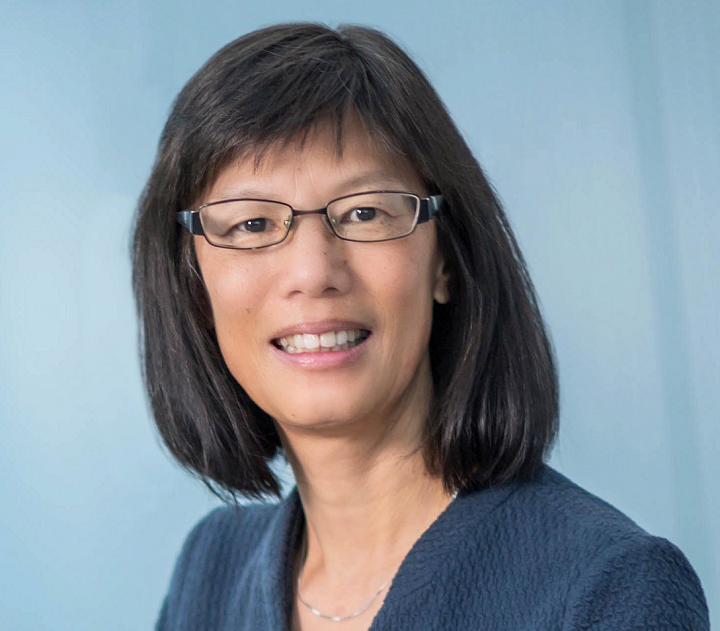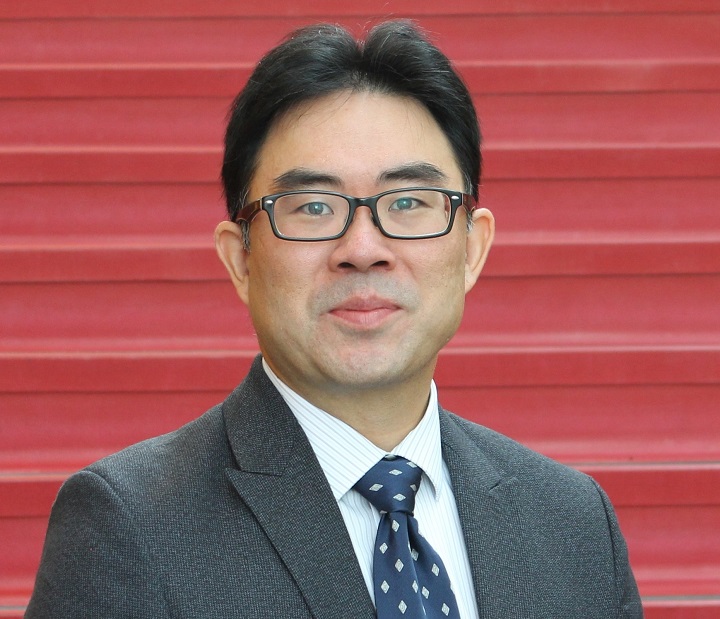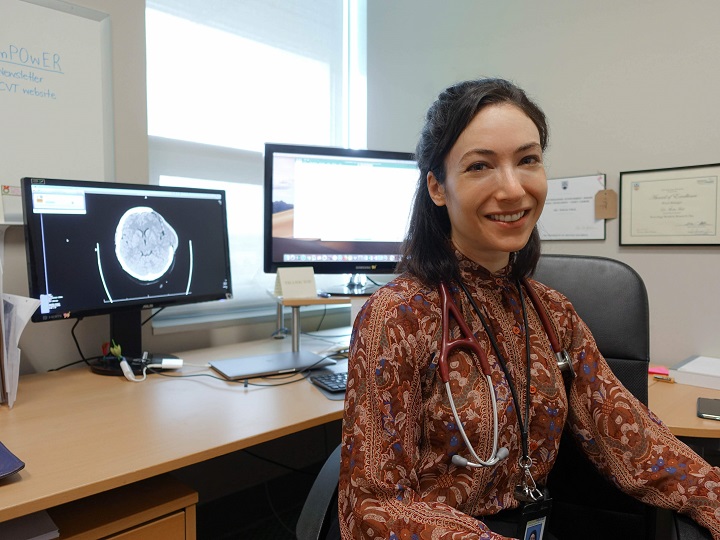As Stroke Services BC celebrates 10 years of existence, program staff are dedicated to highlighting the inspiring work done by leaders in the field, ensuring that the researchers and clinicians doing innovative work are recognized for their efforts as well as asking them about the progress they’ve seen over the past decade and what they see ahead in the coming years.

As one of a small number of Canada Research Chairs in stroke care, Dr. Janice Eng has an enviable view of clinical and research practices in stroke recovery, one that is built on close to 20 years of study and collaboration.
It’s also a viewpoint that gives her ample opportunity to observe and understand how things have unfolded when asked about the changes she’s seem over the last 10 years.
“In my field, the biggest change has been shortening the rehabilitation period,” she explains. “I published a paper in 2002 where the average length of stay was 56 days, or eight weeks. Today that period is three to four weeks, less than half of what it used to be.”
This shift alone has had implications for clinical and research professionals who are trying to do more inpatient work with stoke patients in half of the time they used to have with them.
“This has had ramifications for all of us as practitioners,” she explains.
The other major shift from her perspective is the shift of stroke recovery from a less intensive program to today where survivors are mobilized immediately and strongly encouraged to get hundreds or thousands of repetitive movements daily to actively recover. She’s seen the benefits of active rehabilitation to many of the stroke survivors she’s seen in recent years.
As for potential advances in the coming decade she’s optimistic that active rehabilitation will continue to advance.
“With about 90 per cent of my work being stroke rehabilitation and recovery, I’m proud of the work we did to develop the GRASP (Graded Repetitive Arm Supplementary Program) program,” she explains. “It’s being used in well over 5,000 sites around the world and is unique because of the accessibility it offers to both practitioners and stroke survivors.”
Data collected in a survey of registered UK therapists indicated that more than a third of all therapists had implemented GRASP. The program has been added to the Canadian Stroke Best Practice Recommendations and last year was added to the World Health Organization’s recommended interventions for stroke rehabilitation. The ability to have research she’s contributed to move into everyday practice is something that motivates her.
She was thrilled to discover recently that a GRASP kit is now available at the Vancouver General Hospital Gift Shop, a sign that the work is gaining more notoriety and understanding amongst non-clinical folks.
Janice also sees the enormous growth potential for accessible rehabilitation programs in coming years and hopes to continue building on the FAME (Fitness and Mobility Exercise) program she’s developed, an easily accessible group exercise program proven to improved mobility, cardiovascular fitness, arm and hand function for stroke survivors with standing and walking ability.
Janice also sees the enormous growth potential for enhanced rehabilitation programs and hopes to continue building on her collaborative Determining Optimal Post-Stroke Exercise (DOSE) study. With a focus on varied levels of rehabilitative activities, the study was aimed at determining the appropriate exercise dose to optimize recovery.

Dr. Brodie Sakakibara is a clinical researcher who takes a unique interest in understanding the motivations of people. What prompts people to do what they do? Or what gets in the way of them doing what they need to do, for example, something they know would benefit their health?
As an Assistant Professor in the Department of Occupational Science and Occupational Therapy, and an Investigator with the Centre for Chronic Disease Prevention and Management at UBC, he’s channelled his curiosity into delving into the implications of a first stroke for people and how health professionals can help someone avoid a second or third one.
“Stroke survivors face a tough road,” he says, “as 94 per cent of this population have multiple chronic diseases. This alone can make their recovery and ability to live well after a stroke extremely challenging.”
It’s this understanding that stroke survivors are often faced with a daunting road of rehabilitation that piques his interest in motivating them to stick diligently with their rehab and recovery regimen once they’ve left the acute care setting.
“Once people go back home after a stroke, they typically have the same risk factors they had prior to their first stroke,” he says. “It can be very hard for people to know how to change these health behaviours. And because they’re living their life with the same risk factors, this increases their risks of a secondary stroke or another trip to the hospital.
“We need to focus on providing community-based resources to support survivors,” he says. But he’s clear that, because of limited health care resources these resources have to be low cost, accessible and not limited to people only in urban settings.
“We need to help stroke survivors improve their health behaviours to reduce their occurrence of secondary events,” he says. “And whatever programs we develop, they have to be accessible to people in their communities,” recognizing that specialized equipment can be difficult to come by outside of larger centres.
He welcomes a trend in recent years towards more precision, client-based rehabilitation and recovery approaches, something he’s seen steady progress on during the last decade.
“We used to deliver the same blanket programs to everyone,” he describes. “We now know there are very real differences between how recovery is perceived.
“Whether it’s sex and gender differences or age differences, these factors all play a role in helping customize a program for someone that will help them respond better to their interventions.”
Where does he see potential advances for stroke survivors?
“The potential for technology to improve the delivery of recovery services will really accelerate in this next decade,” he says. “The pandemic has shown we can operate remotely and people will be developing technology platforms in the future that we haven’t even thought about yet.”
He sees these therapies using consumer-based, low-cost technologies that can help optimize the connection between participants in their home and therapists, once again focusing on the underlying motivations of people to help them succeed.
Lastly, he sees a growing push to educate the public about stroke risk factors such as physical activity, hypertension, diet, nutrition, and stress levels.
“People need more understanding of the risks they’re facing when it comes to a stroke, which will help them change their behaviour.”

As an undergraduate Geology student years ago, Dr. Thalia Field had no inkling she’d wind up a neurologist and delving into the many mysteries of stroke recovery. But during her time doing research as a summer student with the Calgary Stroke Program, she found herself fascinated by the potential of acute stroke therapies and the patient recovery journey.
Fast forward to today and Thalia is still fascinated, having spent much of the past decade pursuing a search for more understanding in stroke care and recovery en route to her role as an Associate Professor at UBC and past Postgraduate Fellowship Program Director of the Vancouver Stroke Program. Her interest in stroke treatment and recovery have only grown, as she involves herself in a variety of research and clinical studies around stroke, cognition, thrombosis and patient-centered outcomes.
Looking back over the last 10 years, she reflects on the advances in care in the context of greater access to technology and an enhanced focus on collaborative care between health care professionals, stroke survivors, and families.
“Outcomes after stroke have continued to improve alongside acute therapies and improved access to specialized treatments and care. This is changing our goalposts in term of needs for rehabilitation in order to best improve day-to-day function.”
As for advances she’d welcome over the next 10 years, she sees the next frontier of stroke care advances focusing on rehabilitation: use of telemedicine to improve access to specialized rehabilitation, further advances in evidence-based rehabilitation, and a growing focus on post-stroke complications beyond motor weakness alone.
In particular, how a greater research focus on speech, cognition, pain and fatigue might help to more effectively rehabilitate the growing number of younger, higher-functioning stroke survivors with many years ahead on their recovery journeys.
“Immobility is a serious issue for people who have survived a stroke,” she says. “Continuing to exercise is so important to one’s rehab. The pandemic was disruptive to in-person rehabilitation but has allowed for faster uptake of virtual alternatives.”
She also sees the potential for a greater focus on primary prevention in the future due to improved access to primary care through telehealth, improved awareness and steps towards improving care barriers from social determinants of health. Always interested in technology, she also is researching use of artificial intelligence to help identify and risk-stratify people who may have pre-clinical issues (not yet manifesting with symptoms) or who are at high risk for stroke and vascular dementia.
“Being able to identify early on people who have some of the risk factors would be a huge step forward.”
As the Stroke Services BC team looks forward to the next 10 years of collaboration with leaders in the field such as these three renowned researchers, SSBC Manager Katie White says, “We see exciting times ahead for advances in stroke care and recovery that will have a meaningful impact on people across BC.”
